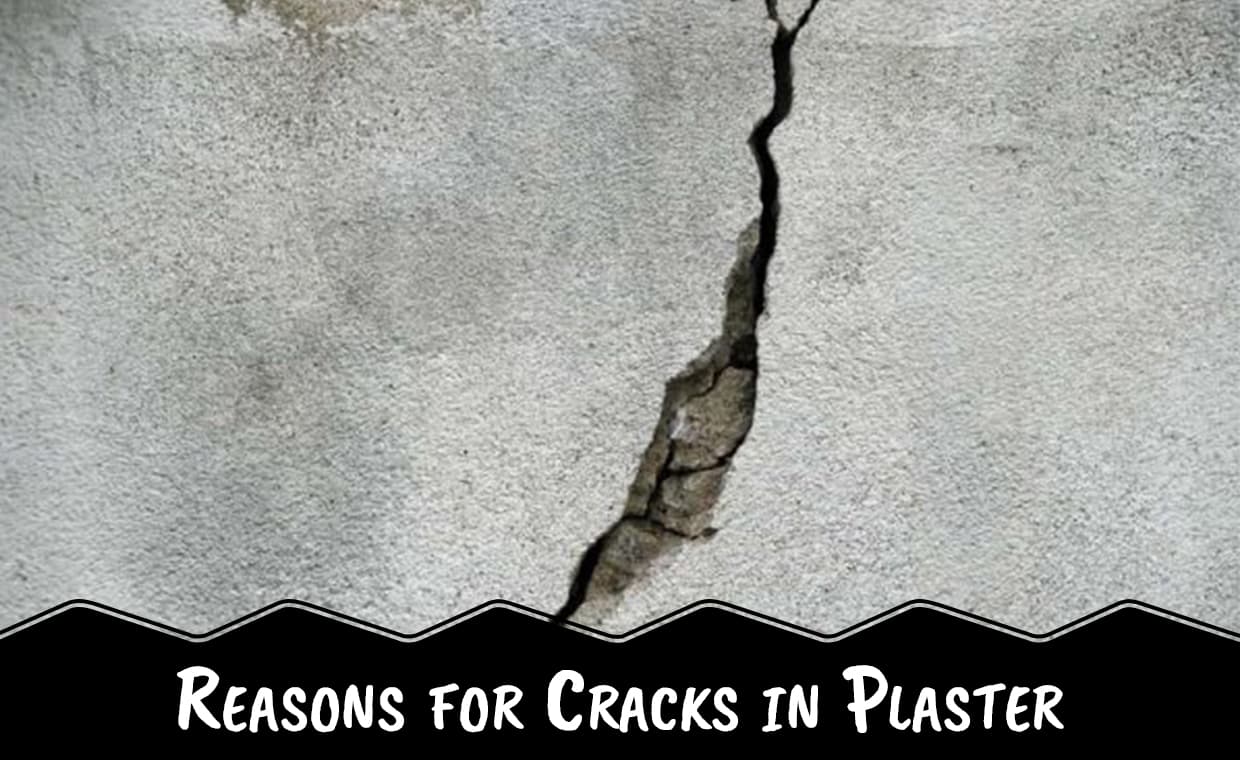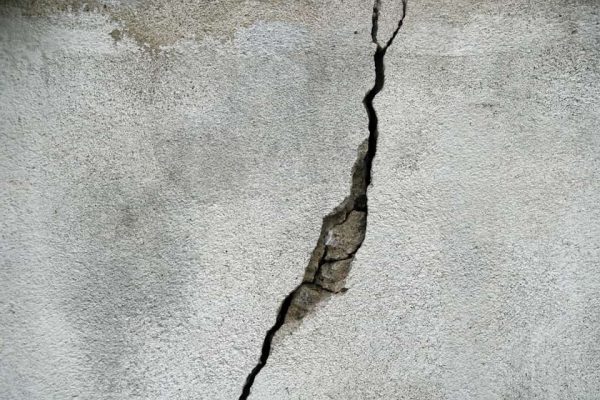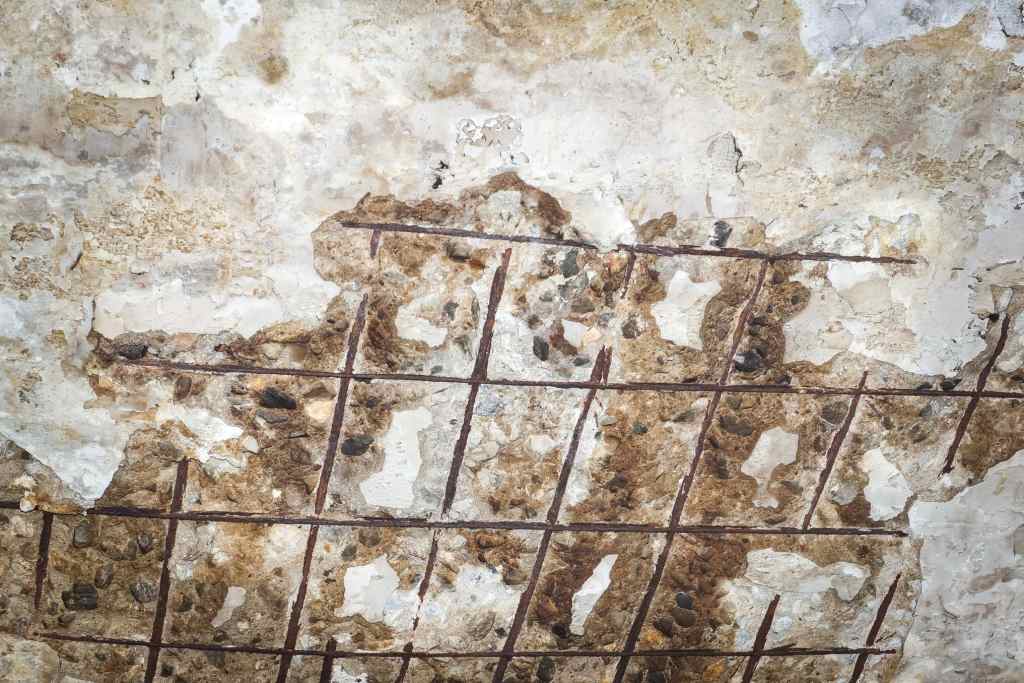
Whenever any structural element is subjected to load, internal or external, and when the stresses exceeds the permissible limits of stresses of that particular materials, cracks develop in that element. All houses, i.e. all structural elements in the houses are designed to withstand different loads that are likely to come during its life. The various types of loads are dead load, i.e. load of structure itself, live load i.e. load of occupants, furniture etc. loads due to natural disasters like earthquake, cyclone, etc. Further stresses are also developed due to change in temperature, expansion, contraction of the house due to heat, change in moisture content, foundation movement, etc. Stresses also develop due to corrosion, wear and tear, lack of maintenance etc. An Ideal design is one, which takes care of all the above factors. However, some unknown unexpected loads always occur due to bad workmanship or poor quality materials. The load carrying capacity of material thus gets reduced resulting in cracks. Cracks may be structural or non-structural. Structural cracks are serious and need immediate care and curative measures.Please always check whether the cracks are structural or non-structural. Also see whether the cracks are through i.e. they appear in same length, width and direction on both faces of walls. Many times, they are not through and may appear on only one side of wall. Through cracks are serious. Cracks only on one side need further investigation; as to how deep are they inside. They may extend in entire thickness of plaster and part of wall or RCC element. Sometimes the cracks are not even throughout the thickness of plaster. They may be just a few mm deep in plaster and can be just filled with any cement/polymer based filler and are not a cause for worry. But in the case of structural cracks, if they are not prevented at an early age, then it will cost you lot at the later stage.Cracks may be structural, non-structural. Cracks are classified as thin, medium, wide, straight, toothed, stepped, map pattern, vertical, horizontal & diagonal cracks, etc.
Here we discuss the reasons for the cracks in plaster.

Cracks in Plaster
Plaster is a very thin component made of mortar. It is applied on the surface of masonry of the house to get the smooth, decorative surfaces. It protects the outer wall from rainwater. Generally, it is a mixture of the building materials like cement, lime/clay, fine aggregates, water, etc. The durability of plaster depends on the adhesion with the background surface. Thus, preparing a good background surface is a very important factor. The thickness of plaster is also an important factor.
Reasons for Cracks in Plaster:
01. Cracks in Plaster due to the Effect of the Seasonal Change:

Cracks due to Change in Moisture
When the cold or hot weather follows hot or cold weather, the amount of moisture is maximum in the atmosphere. The plaster absorbs this moisture through fine voids. The building materials like brick, mortar, etc. expand on absorbing moisture, and shrink on drying.
Sometimes the materials like brick, mortar expands on heating, and contracts on cooling which depends on their properties (i.e. thermal coefficient of materials).
Thus, in both the cases, the stresses set up in the component of house and it may be a reason for cracks in the masonry or plaster.
02. Shrinkage Cracks:
In the case of freshly applied plaster on the wall, the water will evaporates from plaster and it develops the shrinkage cracks due to its initial shrinkage i.e. reduction in volume. The extent of initial shrinkage in cement concrete and cement mortar depends on cement content, water content, aggregate, curing, presence of excessive fines in aggregates, chemical composition of cement, temperature, humidity.
03. Cracks in Plaster due to Poor Construction Practice:
Sometimes construction professionals do not respect codal provisions intentionally (i.e. by reducing the project duration or for the speedy construction or to save cost) or even unintentionally (i.e. poor knowledge of construction practices). It is very hazardous. Following are the examples of the bad construction practices which may be the reason for cracks in plaster.
- The plaster is applied without preparing the background surface i.e. the surface have oil and greasy spots or the joints in masonry are not raked properly, etc.
- The thick coat is applied to the surface of the wall either to finish the uneven wall or to make it in the plumb.
- The plaster is carried out without applying chicken mess at the junction of the RCC or masonry.
Also Read:
Separation Cracks between RCC and Masonry Joints
Separation Cracks between Masonry Walls and Door Frame Joints
- Sand used for making the mortar is very fine i.e. sand will pass more than 5% by weight through a sieve of 100 mesh (B.S. Sieve).
- Sand or water used for making the mortar is not clean or not free from deleterious matter.
- Poorly prepared mortar i.e. mortar is prepared on the poor surface.
- Plaster is not cured properly. i.e. no curing, use of dirty water for curing, etc.
- Poor mortar proportion i.e. less cement used.
04. Cracks in Plaster due to the Corrosion of Reinforcements:

Cracks due to Corrosion
The reinforcement is embedded in the concrete for the best performance of the component of house. But sometimes, the poor quality of concrete (porous concrete) allows moisture to percolate inside. The moisture reacts with the cement and breaks the protective layer of reinforcement which leads to corrosion of reinforcement. Corrosion of reinforcement leads to outward thrust due to increase in volume and it may cause cracks in concrete. Thus, it is the reason of cracks in plaster. Corrosion is like cancer in the body, and it creates a rust film due to vicious circle.
Also Read:
Factors Causing Steel Corrosion in Concrete Structures.
Identify Risk of Steel Corrosion in Concrete Structure.
Reasons of Building Failure due to Corrosion of Steel Bars.
05. Cracks in Wall/Structural Elements:
Sometimes cracks appear though out the thickness of wall i.e. the crack is visible from both sides of the wall/structural elements. Such through cracks are mostly structural cracks.
Don’t jump on the conclusion while deciding the type of cracks. It may be structural or non structural, one should follow the following steps to decide the types of cracks.
How to Inspect Cracks?
Step 1: One should find out the location of cracks i.e. whether it is in structural component i.e. RCC column, RCC beam, RCC slab, or masonry or in plaster.
Step 2: One should find out the location of cracks i.e. whether the cracks are in horizontal, vertical, or diagonal pattern.
Step 3: Observe the length of cracks i.e. whether the cracks are shallow at one end and deep at another end.
Step 4: Observe the width of cracks i.e. whether it is uniform or tapered.
Step 5: Observe the depth of cracks i.e. weather it is through paint, plaster, or throughout the wall, and appears on both side of a wall.
Step 6: Find out the age of cracks. Remember that the clean cracks indicate that they are new cracks or coated with paint or dirt indicates that they are old cracks.
Step 7: Find out whether the cracks are active (moving) or dormant.
Aforementioned steps help to decide whether the cracks are in plaster or are structural or non-structural.
06. Cracks in Plaster due to the Foundation Movements:
Sometimes frequent drying and wetting of the soil occurs near the foundations. The swelling and shrinking of the expansive soil (black cotton soil) may also be the reason of movement of the foundation. Consideration of the low safety factor at the time of design of the house i.e. the designer engineer may not choose value of importance factor (for building) greater than 1.2. (Value mentioned in IS:1893) also leads to unequal distribution of load. It may also results into the cracks.
Sometimes the excessive force of natural disasters (earthquake, flood, hurricane, etc.) exerts pressure on the foundation. It promotes the movements of the foundation. If the movement of foundation exceeds then its allowable limit, then the differential stress develop in the component of house. It may be the reason for cracks, or the building may collapse fully or partially.
Hence, aforementioned reasons may set up internal stress in the elements of house, and it may cause cracks in the wall or plaster, or it may be the reason for the collapse of house fully or partially.
07. Cracks in Plaster due to the Chemical Reaction:
The alkali sulphates present in the clay brick react with the cement and forms the expansive constituents. This chemical reaction in masonry leads to the outward thrust due to expansion and it may cause the cracks in plaster.
08. Cracks in Plaster due to the Growth of Vegetation:
Large trees growing near the house or plants growing in the fissures of walls may also develop the cracks in plaster.
In conclusion, plaster cracks are generally non-structural cracks in RCC framed structure. But in case of load bearing structure, cracks may be dangerous if they are active (Cracks expand or contract). Hence, as soon as you find cracks in plaster or masonry, repair it as early as possible; otherwise, it costs you lot at a later stage. Please find the smart solutions on the repair- maintenance section of gharpedia and stay tension free.
Must Read:
Investigation & Repairing of Cracks in Brickwork
Materials for Repair of the Concrete Structure


































